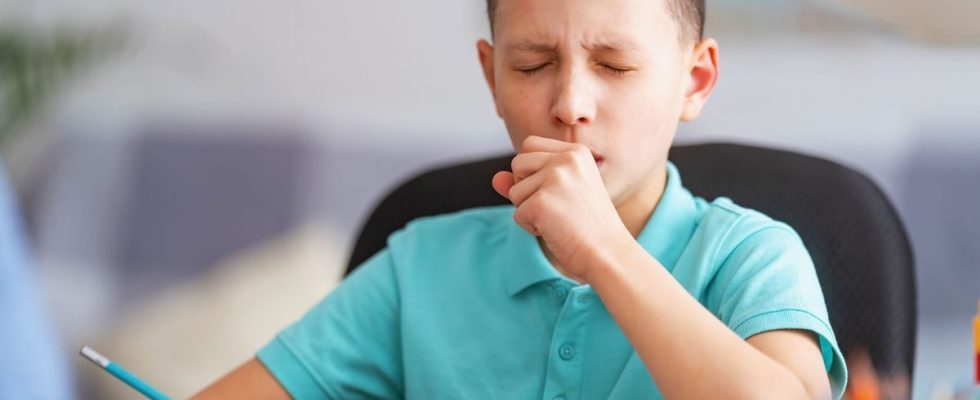Published on
Updated
Reading 2 min.
in collaboration with
Guislaine David (Co SG and spokesperson for SNUipp-FSU)
According to a new study published by Public Health France, Tuesday January 30, 2024, nearly 30,000 cases of asthma in children are preventable each year. On this subject, Doctissimo received the reaction of Guislaine David, spokesperson for SNUIpp-FSU.
This is an edifying figure: according to Public Health France, there are nearly 30,000 cases of asthma in children aged 6 to 11, who “would be avoidable every year in France“, if we reduced exposure to certain air pollutants in classrooms. The substances targeted are formaldehyde and mold.
Formaldehyde is a substance which is used in the composition of certain paints but also floor and wall coverings. It is also found in plywood furniture.
Thousands of cases of preventable asthma
For this study, Public Health France relied on data from the Indoor Air Quality Observatory to study the impact of formaldehyde and mold, by cross-referencing this information with children’s health data. available.
The health authority thus makes the link between the substance and nearly 30,000 cases of preventable asthma. For mold, she estimates that nearly 12,000 cases could be avoided if it were not present in educational establishments.
A worrying finding for children’s health
Public Health France recommends adding health and environmental criteria in order to choose materials, furniture and school supplies used in classrooms. This would limit exposure to formaldehyde or other volatile organic compounds. “It is possible to identify these materials, paints, coatings which are less emitting thanks to labeling. assures Marion Hulin, epidemiologist at Public Health France, in charge of air quality and health issues, to our colleagues at France Info.
“We are facing an air quality problem in schools”
This observation is all the more problematic since children spend almost a third of their days at school and this place represents the second most frequented indoor environment after their home. When questioned, Guislaine David, spokesperson for the SNUIpp-FSU union, was outraged by these results. “This is a very worrying and not very surprising study. There is a real problem with renewing the air in classrooms. This is all the more problematic in primary schools and nursery schools, because unlike middle and high schools, where students constantly change rooms, children remain in class the vast majority of the time. she laments.
The impact of road pollution will be the subject of future studies
The union representative blames the public authorities, who according to her are not taking the issue head on. “It’s like asbestos. We know that several schools contain asbestos, but some municipalities turn a blind eye“.
What is the right solution for polluted classroom air? Should we open the windows? “This is not necessarily the right solution, for reasons of safety and external pollution, particularly for schools close to major roads. We are instead asking for the installation of Co2 sensors and air purifiers but for the moment we are little heard”. Things may change soon: Public Health France is planning new studies to look at the impact of road traffic near schools, particularly in large cities.
